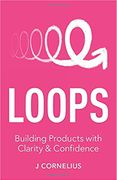
A 5 Minute Overview Of
Loops
Building Products With Clarity & Confidence
About the Author
J Cornelius is founder and president of Nine Labs, a digital product strategy, design, and experience consultancy. He is a popular keynote speaker and a strategic advisor to Shadow Ventures, as well as a mentor with the Founder Institute. He was previously president of the Atlanta Web Design Group for web professionals, and VP of operations for CoffeeCup Software, Inc. J. Cornelius also served as president of Bluedomino Web Hosting, which was acquired by EIG in 2005. He is a graduate of the Wharton School of the University of Pennsylvania.
The Main Idea
How do the world's fastest moving and most successful startups get in front and stay there? Simply put, they are customer-centric — which means they create products people love. They use five human-centered business design loops to achieve that.

Remember, human-centered business design is all about building products and services people love. This is always a hard, chaotic, and messy process, but it is wonderful when it comes together. To become more successful in your own business, figure out how you can follow the world's most successful companies and utilize the five loops
It's best to think about human-centered business design as a series of Loops. There are lots of ideas out there, and lots of people who have ideas. Only a few of those ideas are viable, and of the few that turn into hunches, even fewer will develop into products that launch businesses. Sometimes the market isn't ready yet, or the technology doesn't exist yet, or you don't have the team put together yet, or the solution is just too damn expensive. Remember that potential failure points exist. The flip side of that, of course, is that success is a very real possibility. And with confidence in your ideas and clarity on how to execute on them, you should pursue that success.
How to Build Products with Clarity & Confidence
Loop #1 — Research. The research loop is all about building confidence and validating you've identified a problem people care about enough to pay for a solution. Research is first and foremost a problem-discovery process. You're looking for a problem you can fall in love with, an understanding of customer pain points, and the quantifiable potential gains of a solution.
Loop #2 — Prototype. The prototype loop begins with the question: "How might we ..." You then design a solution, not a product. Once you have clarity about the solution you're offering, you start building cheap experiments and prototypes which you test with your target market. The prototype loop is all about learning when something works and when it does not.
Loop #3 — Test. The testing loop is very straightforward. You build a simple prototype (physical, paper, or digital), and get it into the hands of people who will value that solution highly. You then talk to those initial users, and ask how it worked for them. Prototyping and testing tend to co-mingle, and based on feedback you'll often loop back and forth between them.
Loop #4 — Position. The positioning loop involves branding where you position yourself to stand out from the competition, and reinforce the personality of your solution. A good brand will exist at the intersection of what your company does and how people feel about it. This loop focuses on how you go about creating a brand future customers will trust.
Loop #5 — Build. The build loop as the final loop signals you never stop doing research, developing new prototypes, and testing and tweaking your ideas. You keep talking to your customers, and coming up with innovations they value in perpetuity. You keep building new MDPs (Minimum Delightful Products) which you test, refine, and iterate over and over.
Summaries.Com Editor's Comments
As usual with the books we summarize, I really liked this week's book, Loops. It encapsulated some very good business ideas. I loved the approach that you have to fall in love with the problem you're solving, not your product. I've also read in the past that you should fall in love with your customers, not your products. That's a great approach for the present business era.
Of course, the idea of integrating customer feedback into product development is well established. Eric Ries formalized this approach, and started the Lean movement, with his book The Lean Startup (which is included in this week's mini-course). Loops aligns with the overall Lean methodology precisely, and is a logical application of those ideas. Finding a problem worth solving comes through in Loops loud and clear, and is of vital importance.
Overall, good solid ideas on how to do startups and innovation right. The five loops makes sense, and are practical and worthwhile. Understanding your customers, and collaborating with them to come up with a solution to their most pressing problems has got to be good for you and for them. A very good book in my opinion.
Want in-depth 30-minute summaries?
In addition to this 5-minute overview, Summaries.Com has a premium 30-minute summary of this book and 1,000+ more, to help you advance your career and business.
Check Out Summaries.com Premium Plans Today!Want more 5-minute Snapshots?
To get a new 5-minute business book snapshot each week, sign up for the Summaries.com free plan.
Sign Up for the Summaries.com Free PlanLean Innovation and Startups 101 Collection
If you enjoyed this summary, here is a collection of related business book summaries, to help you get ideas and strategies that will give you an edge over your competition.
This mini-course will teach you how to approach structuring and running a startup that works.
Buy Lean Innovation and Startups 101 Collection (5 x 30-Min Summaries)
Loops
Building Products With Clarity & Confidence
by J Cornelius
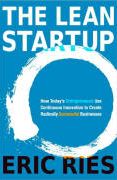
The Lean Startup
How Today's Entrepreneurs Use Continuous Innovation to Create Radically Successful Businesses
by Eric Ries
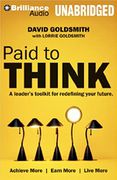
Lean Customer Development
Building Products Your Customers Will Buy
by Cindy Alvarez
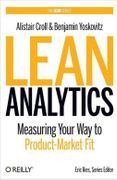
Lean Analytics
Using Data to Build a Startup Faster
by Alistair Croll and Benjamin Yoskovitz
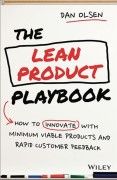
The Lean Product Playbook
How to Innovate With Minimum Viable Products and Rapid Customer Feedback
by Dan Olsen